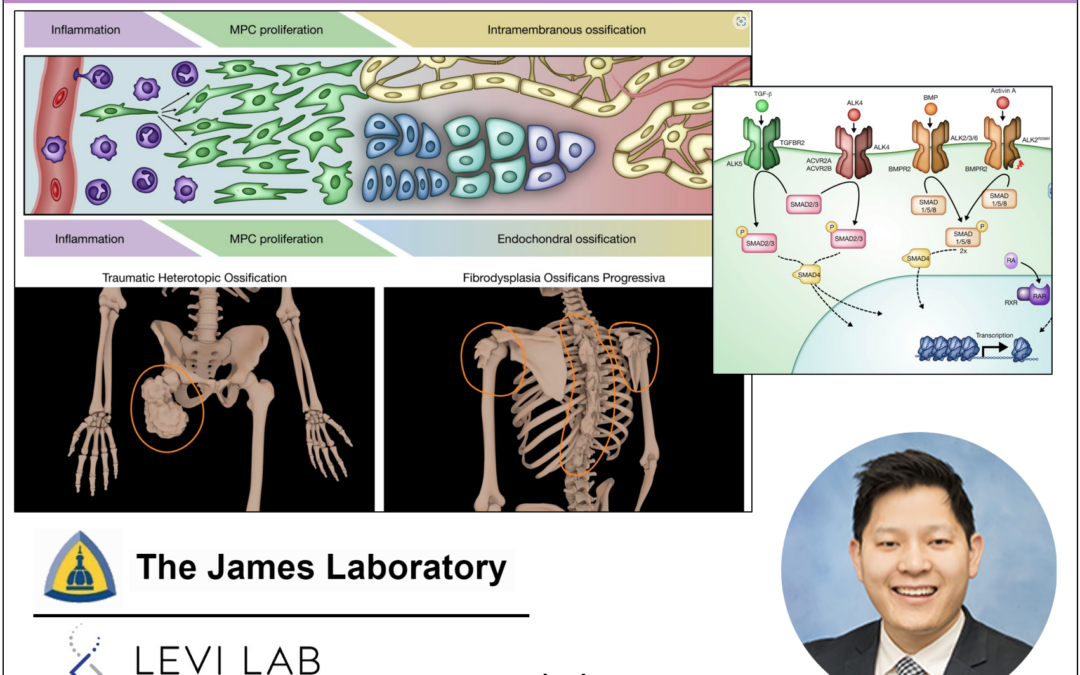The Levi laboratory is proud to present a publication in Journal of Clinical Investigtation – Insights entitled “Contemporary perspectives on heterotopic ossification.”
As an amalgam of our previous work and rapidly expanding literature examining heterotopic ossification, we compiled the contemporary understanding of the disease process along with current clinical standards, limitations, and shifting paradigms in the conceptualization of HO. The classic pathway remains with inflammation, mesenchymal condensation, and subsequent chondro/oteogenesis. However, ongoing studies have begun to implicate extra-inflammatory/osteogenic sources of regulation that serve as checkpoints for various steps along the classical pathogenesis. We also include here the myriad of investigational tools that have also been generated by talented research teams across the globe, and we have composed a succinct and hopefully helpful review of the current state of HO research with promising future targets for therapies and eradication of this disease. The research team led by Dr. Hwang, and Levi of the Department of Surgery’s section of plastic surgery at Harvard University and UTSW, curated and distilled the extensive literature. This work exemplifies the invaluable cross-institutional collaboration with bony experts, including Aaron W. James, and Qizhi Qin from Johns Hopkins University; Charles Hwang from Harvard University; along with the talented researchers including Chase Pagani throughout the UTSW laboratory.
PMID: 35866484. (Read here!)
Abstract
Heterotopic ossification (HO) is the formation of ectopic bone that is primarily genetically driven (fibrodysplasia ossificans progressiva [FOP]) or acquired in the setting of trauma (tHO). HO has undergone intense investigation, especially over the last 50 years, as awareness has increased around improving clinical technologies and incidence, such as with ongoing wartime conflicts. Current treatments for tHO and FOP remain prophylactic and include NSAIDs and glucocorticoids, respectively, whereas other proposed therapeutic modalities exhibit prohibitive risk profiles. Contemporary studies have elucidated mechanisms behind tHO and FOP and have described new distinct niches independent of inflammation that regulate ectopic bone formation. These investigations have propagated a paradigm shift in the approach to treatment and management of a historically difficult surgical problem, with ongoing clinical trials and promising new targets.

